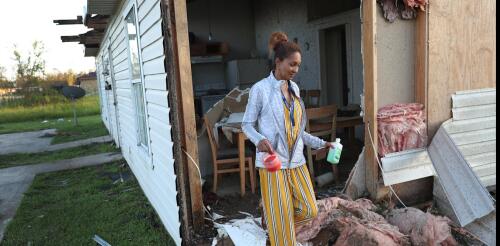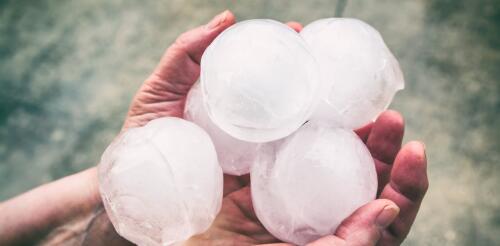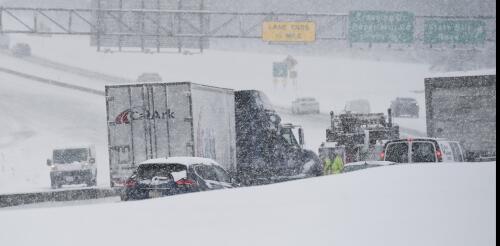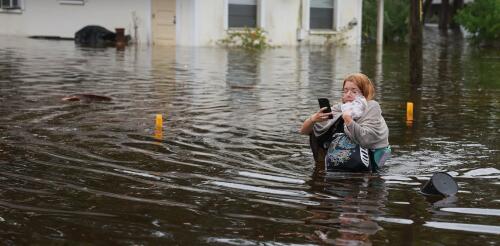Insurance
Most Americans will remember 2020 as the year when the pandemic changed everything. But for Lake Charles, Louisiana, and its neighbors along the Gulf Coast, it was also the year of record-setting disasters, when “once-in-a-lifetime” storms hit in such rapid succession that their impacts blurred together. A recent National Academies consensus study I worked on looked into the compounding disasters that the region faced – both physical and socioeconomic – as storm after storm arrived during the pandemic with little time for recovery. It concludes that Lake Charles’ experiences could be a harbinger of what’s to come in a warming world unless the nation fundamentally rethinks its disaster preparedness, response and recovery strategies. Lake Charles’ compounding disasters Hurricane Laura made landfall near Lake Charles on Aug. 27, 2020, as a powerful Category 4 storm, with wind speeds exceeding those that local building codes were designed...
Hail the size of grapefruit shattered car windows in Johnson City, Texas. In June, 2024, a storm chaser found a hailstone almost as big as a pineapple. Even larger hailstones have been documented in South Dakota, Kansas and Nebraska. Hail has damaged airplanes and even crashed through the roofs of houses. How do hailstones get so large, and are hailstorms getting worse? As an atmospheric scientist, I study and teach about extreme weather and its risks. Here’s how hail forms, how hailstorms may be changing, and some tips for staying safe. How does hail get so big? Hail begins as tiny crystals of ice that are swept into a thunderstorm’s updraft. As these ice embryos collide with supercooled water – liquid water that has a temperature below freezing – the water freezes around each embryo, causing the embryo to grow. A hailstone cut in half, which reveals layers of clear and cloudy ice formed as the hailstone journe...
Winter storms can easily become billion-dollar disasters as the snow piles up on interstates and collapses roofs and power lines. Yet, while canceled flights and business interruptions can’t be avoided, what turns a snowstorm into a disaster often can be. I have worked on engineering strategies to enhance disaster resilience for over three decades and recently wrote a book, “The Blessings of Disaster,” about the gambles humans take with disaster risk. Snowstorms stand out for how preventable much of the damage really is. Stay off the roads The easiest storm costs to avoid involve human behavior, including driving during snowstorms. Successfully plowing the snow off a highway requires repeated passes to prevent snow from accumulating to the point where it piles up faster than it can be removed. However, that simple concept breaks down when an accident blocks the lanes, and traffic – including commerce and emergency vehicles – grinds to a halt. W...
Climate change is affecting communities nationwide, but Florida often seems like ground zero. In September 2022, Hurricane Ian devastated southwest Florida, killing at least 156 people and causing an estimated US$113 billion in damages. Then Hurricane Idalia shut down the Florida Panhandle in September 2023, augmented by a blue supermoon that also increased tidal flooding in southeast Florida. Communities can adapt to some of these effects, or at least buy time, by taking steps such as upgrading stormwater systems and raising roads and sidewalks. But climate disasters and sea-level rise also harm local governments financially by increasing costs and undercutting their property tax bases. Local reliance on property taxes also can discourage cities from steering development out of flood zones, which is essential for reducing long-term risks. In a newly published study and supporting online StoryMap, we present the first-ever municipal fiscal impact assessment of sea-level rise in...
As questions loom over the Federal Emergency Management Agency’s ability to fund disaster recovery efforts, people whose homes were damaged or destroyed by recent wildfires and storms are trying to make their way through the difficult process of securing financial aid. Residents in communities hit by Hurricane Idalia, the Maui fires or other recent disasters have a long, tough journey ahead. Early estimates suggest Idalia caused US$12 billion to $20 billion in losses, primarily in property damage, acccording to Moody’s Analytics. And rebuilding Lahaina, Hawaii, has been forecast at over $5.5 billion. How well the initial disaster response meets residents’ needs has far-reaching consequences for community resilience, especially for vulnerable residents, as we saw after Hurricanes Katrina and Maria. I am a law professor who focuses on disaster recovery and preparedness and has created several legal clinics to assist survivors. Here’s what anyone facing lo...




